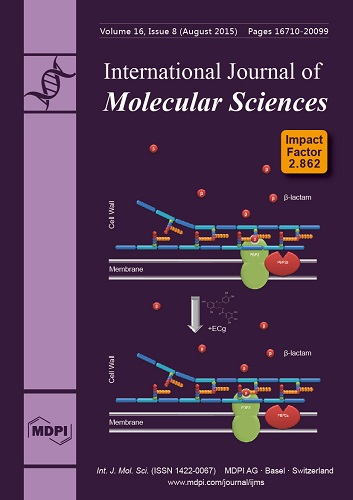Open AccessArticle
Effect of Factor XIII-A G185T Polymorphism on Visual Prognosis after Photodynamic Therapy for Neovascular Macular Degeneration
by
Francesco Parmeggiani, Ciro Costagliola, Francesco Semeraro, Mario R Romano, Michele Rinaldi, Carla Enrica Gallenga, Maria Luisa Serino, Carlo Incorvaia, Sergio D’Angelo, Katia De Nadai, Roberto Dell’Omo, Andrea Russo, Donato Gemmati and Paolo Perri
Cited by 7 | Viewed by 5347
Abstract
Macular degenerations represent leading causes of central blindness or low vision in developed countries. Most of these severe visual disabilities are due to age-related macular degeneration (AMD) and pathologic myopia (PM), both of which are frequently complicated by subfoveal choroidal neovascularization (CNV). Photodynamic
[...] Read more.
Macular degenerations represent leading causes of central blindness or low vision in developed countries. Most of these severe visual disabilities are due to age-related macular degeneration (AMD) and pathologic myopia (PM), both of which are frequently complicated by subfoveal choroidal neovascularization (CNV). Photodynamic therapy with verteporfin (PDT-V) is still employed for CNV treatment in selected cases or in combined regimen. In Caucasian patients, the common polymorphism G185T of factor XIII-A gene (FXIII-A-G185T; rs5985) has been described as predictor of poor angiographic CNV responsiveness to PDT-V. Nevertheless, the prognostic implications of this pharmacogenetic determinant on long-term visual outcome after a PDT-V regimen have not been evaluated. We retrospectively selected Caucasian patients presenting with treatment-naive CNV and receiving standardized PDT-V protocol for two years. The study population included patients affected by subfoveal CNV secondary to AMD or PM. We assessed the correlations between the polymorphic allele T of FXIII-A-G185T and: (1) total number of photodynamic treatments; and (2) change in visual acuity from baseline to the end of the follow-up period. Considering a total study population of 412 patients with neovascular AMD or PM, the carriers of 185 T-allele of FXIII-A (GT or TT genotype) received a higher number of photodynamic treatments than patients without it (GG wild-type genotype) (
p < 0.01; mean number of PDT-V: 5.51
vs. 3.76, respectively). Moreover, patients with 185 T-allele of FXIII-A had a more marked worsening of visual acuity at 24 months than those with the GG-185 wild genotype (
p < 0.01; mean difference in logMAR visual acuity: 0.22
vs. 0.08, respectively). The present findings show that the G185T polymorphism of the FXIII-A gene is associated with significant differences in the long-term therapeutic outcomes of patients treated with standardized PDT-V protocol. The comprehensive appraisal of both anti-thrombophilic effects due to FXIII-A G185T variant and photo-thrombotic action of PDT-V toward CNV provides several clues about the rationale of this intriguing pharmacogenetic correlation. Further investigations are warranted to outline the appropriate paradigm for guiding PDT-V utilization in the course of the combined therapeutic protocol for neovascular macular degeneration.
Full article
►▼
Show Figures






